1. Early Life and Career
Luise Rainer's early life and stage work in Europe laid the groundwork for her eventual move to Hollywood, where her talent quickly garnered attention.
1.1. Childhood and Education
Luise Rainer was born on January 12, 1910, to Heinrich and Emilie (née Königsberger) Rainer, affectionately known as "Heinz" and "Emmy." While some sources list her birthplace as Vienna, Austria, she was officially born in Düsseldorf, Germany, and was raised in Hamburg before moving to Vienna. Her family was upper-class and Jewish. Rainer described her childhood as being born into "a world of destruction," recalling the "starvation, poverty and revolution" of Vienna during her youth. Her father, a businessman who had been orphaned and sent to Texas at age six, later settled in Europe. Due to her father's origins, Rainer claimed American citizenship "by birth."
She was a premature baby, born two months early. Rainer characterized her father as "possessive" and "tempestuous," yet his affections were deeply centered on her, whom he perceived as "eternally absent-minded" and "very different." She was saddened by her mother's similar suffering under his "tyrannical possessiveness," despite her mother being a "beautiful pianist, and a woman of warmth and intelligence." Though generally shy at home, Rainer was remarkably athletic at school, becoming a champion runner and a fearless mountain climber. She stated that she pursued acting to channel her immense physical and emotional energy, contrary to her father's wish for her to attend a finishing school and "marry the right man." Rainer's rebellious spirit led her to be seen as a "tomboy" who preferred solitude, and she feared developing what she saw as her mother's "inferiority complex." At the age of six, after witnessing a captivating circus act, she decided to enter the entertainment world, aspiring to walk on a tightrope herself.
1.2. Early Stage and German Film Career
At 16, Rainer pursued her acting dream, traveling to Düsseldorf under the pretense of visiting her mother for a prearranged audition at the Dumont Theater. She later trained under the renowned Austrian stage director Max Reinhardt, and by the age of 18, critics were already recognizing her exceptional talent. She quickly became a distinguished Berlin stage actress as a member of Reinhardt's Vienna theater ensemble. Her theatrical debut was at the Dumont Theater in 1928, followed by roles in plays such as Jacques Deval's Mademoiselle, Kingsley's Men in White, George Bernard Shaw's Saint Joan, Measure for Measure, and Pirandello's Six Characters in Search of an Author. In the 1920s, the theater director Louise Dumont, under whom Rainer started, was romantically involved with several young actresses, including Rainer herself, and is presumed to have been bisexual.
Prior to her Hollywood career, Rainer appeared in several German-language films. These included Sehnsucht 202 and Madame hat Besuch in 1932, and Today Is the Day (also known as Heut' kommt's drauf an) in 1933.
1.3. Move to Hollywood and MGM Contract
In 1934, while performing in Pirandello's Six Characters in Search of an Author, Luise Rainer was spotted by MGM talent scout Phil Berg. Impressed by her performance, Berg offered her a three-year contract in Hollywood, believing she would appeal to the same audience as the studio's leading Swedish star, Greta Garbo. Despite initially having no interest in film and preferring the stage, Rainer changed her mind after watching the film A Farewell to Arms, which she found "so beautiful." She relocated to Hollywood in 1935 to begin her career in American cinema.
2. Hollywood Career and Major Achievements
Luise Rainer's time in Hollywood was marked by a meteoric rise, achieving unparalleled success with two consecutive Academy Awards, followed by significant professional conflicts and her eventual departure.
2.1. Early Roles and First Impressions
Upon her arrival in Hollywood in 1935, Luise Rainer was seen as a promising new star. MGM studio head Louis B. Mayer and story editor Samuel Marx had reviewed footage of Rainer before her arrival, both recognizing her looks, charm, and a "certain tender vulnerability" that Mayer particularly admired in female stars. Given her limited English proficiency, Mayer assigned actress Constance Collier to coach Rainer in proper speech and dramatic modulation, leading to rapid improvement in her English.
Her first American film role was in Escapade (1935), a remake of one of her earlier Austrian films, where she co-starred with William Powell. Rainer secured the part after Myrna Loy withdrew halfway through filming. Upon seeing the film's preview, Rainer was displeased with her appearance, finding herself looking "so big and full of face, it was awful." Despite her personal reservations, the film generated immense publicity for Rainer, who was hailed as "Hollywood's next sensation." However, she expressed a strong disinterest in interviews, stating, "Stars are not important, only what they do as a part of their work is important. Artists need quiet in which to grow. It seems Hollywood does not like to give them this quiet. Stardom is bad because Hollywood makes too much of it, there is too much 'bowing down' before stars. Stardom is weight pressing down over the head-and one must grow upward or not at all."
2.2. The Great Ziegfeld (1936)
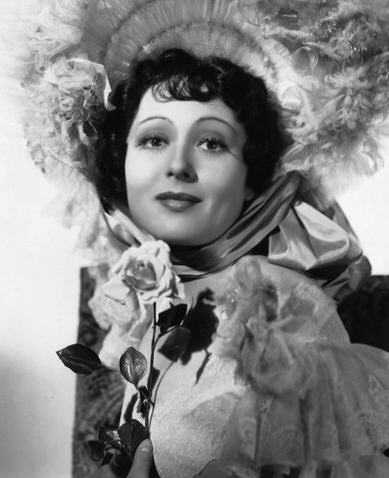
Luise Rainer's subsequent performance was in the musical biography The Great Ziegfeld, where she portrayed the real-life character Anna Held, once again co-starring with William Powell. Powell, having been impressed by Rainer's acting skills in Escapade, had ensured she received equal billing in that film. Producer Irving Thalberg firmly believed that Rainer was the only actress at the studio capable of embodying the role of Anna Held as he envisioned it. However, studio head Louis B. Mayer opposed her casting, deeming the part too small for a rising star, insisting, "You are a star now and can't do it."
As filming commenced in late 1935, doubts about Rainer's ability to convincingly portray Held surfaced in the press, with criticism focusing on her lack of physical resemblance to the Polish-born stage performer. Despite this, the director acknowledged that Rainer was primarily cast for her eyes, which he felt "are just as large, just as lustrous, and contain the same tantalizing quality of pseudo naughtiness" essential for the character. As Thalberg had anticipated, Rainer successfully conveyed the "coquettishness, wide-eyed charm, and vulnerability" required for the role. Biographer Charles Affron noted that Rainer "so impressed audiences with one highly emotional scene" that she was awarded the Academy Award for Best Actress. This pivotal scene featured her character speaking to her ex-husband Florenz Ziegfeld over the telephone, attempting to congratulate him on his new marriage. The camera captured her visible agitation, while Ziegfeld heard a voice teetering between false gaiety and despair; upon hanging up, she dissolved into tears. This dramatic portrayal earned her the nickname "Viennese teardrop."
William Powell, who had worked with Rainer in two films, offered his insights into her acting style and qualities: "She is one of the most natural persons I have ever known. Moreover, she is generous, patient and possesses a magnificent sense of humor. She is an extremely sensitive organism and has a great comprehension of human nature. She has judgment and an abiding understanding which make it possible for her to portray human emotion poignantly and truly. Definitely a creative artist, she comprehends life and its significance. Everything she does has been subjected to painstaking analysis. She thinks over every shade of emotion to make it ring true. In Europe she is a great stage star. She deserves to be a star. Unmistakably she has all the qualities."
On the night of the Academy Award ceremonies, Rainer remained at home, not expecting to win. Upon learning of her victory, Mayer dispatched MGM's publicity head, Howard Strickling, to retrieve her. When she finally arrived, the master of ceremonies, George Jessel, mistakenly introduced Rainer, a duty that had been scheduled for Bette Davis. For her performance, Rainer also received the New York Film Critics Circle Award for Best Actress.
2.3. The Good Earth (1937)
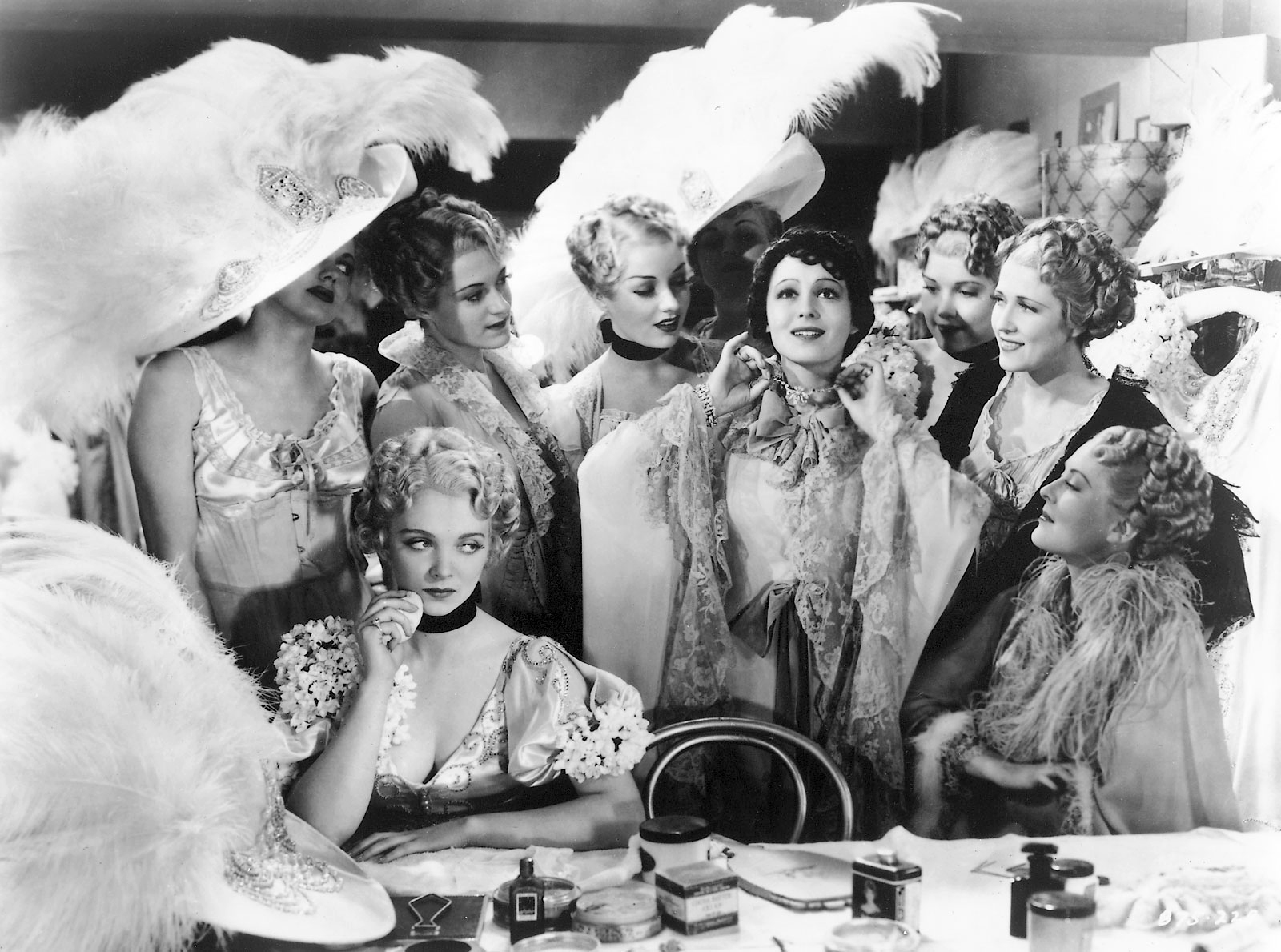
Luise Rainer's next film was The Good Earth (1937), where she co-starred with Paul Muni. She had been considered the most likely choice for the female lead since September 1935. This role, however, was a complete contrast to her previous portrayal of Anna Held. She was required to depict O-Lan, a humble Chinese peasant, subservient to her husband, and speaking very little throughout the film. Historian Andrew Sarris described her comparative muteness as "an astounding tour de force after her hysterically chattering telephone scene in The Great Ziegfeld," a performance that contributed to her winning her second Academy Award for Best Actress.
This award made her the first actress to win two consecutive Oscars, a remarkable achievement that was not matched until Katharine Hepburn's two wins thirty years later. Rainer, Jodie Foster, and Hilary Swank remain the only actresses to have won two Oscars by the age of 30. Despite this historic triumph, Rainer later expressed that winning two consecutive Oscars so early in her career might have been the "worst possible thing," setting an impossibly high standard for audience expectations. She noted that it compelled her to "work all the harder now to prove the Academy was right."
Rainer recalled early conflicts even before production began. Louis B. Mayer, for instance, disapproved of the film and her part in it, preferring her to remain a glamorous film star. She quoted Mayer's horror at Irving Thalberg's insistence for her to play O-Lan, "the poor uncomely little Chinese peasant." Rainer herself feared that with the minimal dialogue provided, she would be "a hilarious bore." She remembered Mayer's comments to Thalberg: "She has to be a dismal-looking slave and grow old; but Luise is a young girl; we just have made her glamorous-what are you doing?" Despite these reservations, Rainer considered the role one of the "greatest achievements" in her career, as it allowed her to express "realism." She even refused to wear a "rubber mask 'Chinese look'" suggested by the makeup department, insisting on acting "genuine, honest, and down-to-earth."
The production of The Good Earth also faced significant challenges. Director George W. Hill, who had spent months in China filming background scenes, committed suicide shortly after returning to Hollywood. Filming was paused until Sidney Franklin could take over. A few months later, before the film's completion, Irving Thalberg died suddenly at the age of 37. Rainer commented years later, "His dying was a terrible shock to us. He was young and ever so able. Had it not been that he died, I think I may have stayed much longer in films." The film's opening screen credit includes a dedication to Thalberg: "To the Memory of Irving Grant Thalberg - his last greatest achievement - we dedicate this picture."
2.4. Subsequent Films and Conflicts with Hollywood
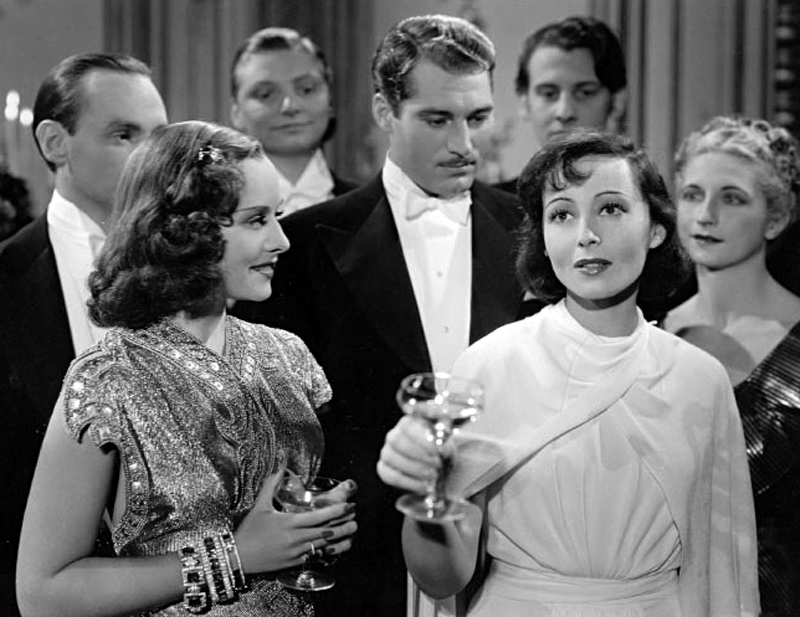
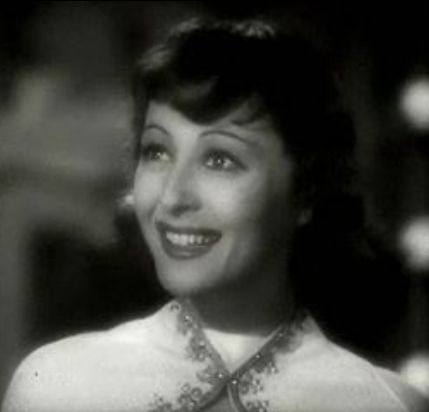
After her two Oscar wins, Luise Rainer's film career continued, but it was marked by a series of less successful roles and increasing tensions with MGM, largely due to her pursuit of more challenging and serious parts.
In late 1936, MGM began developing a script titled Maiden Voyage specifically for Rainer. However, the project was eventually shelved and released in 1939 as Bridal Suite, starring Annabella. Another unrealized film project for Rainer in 1936 was Adventure for Three, intended to co-star William Powell. Her final significant hit for MGM was the successful Oscar-winning musical biopic The Great Waltz (1938), where she played Johann Strauss's long-suffering wife, Poldi.
Her four other films for MGM following her Oscar wins-The Emperor's Candlesticks (1937), Big City (1937) with Spencer Tracy, The Toy Wife (1938), and Dramatic School (1938)-were generally considered ill-advised and did not perform well at the box office, though Rainer often continued to receive praise for her individual performances. The Emperor's Candlesticks, for which Rainer was cast in November 1936, reunited her with William Powell for the final time. For this film, she wore a striking red wig and costumes designed by Adrian, who predicted that Rainer would become one of Hollywood's most influential fashion figures by late 1937. On set, she received comprehensive star treatment, including her own dressing room, a diction teacher, a secretary, a wardrobe woman, a hairdresser, and a makeup artist. Despite this, The Emperor's Candlesticks was Rainer's first film to receive criticism, with some reviewers claiming she had not improved her acting technique.
Although reviews for Rainer's performance in Big City were favorable, critics generally agreed that she was miscast in a 'modern role' and appeared "too exotic" as Spencer Tracy's wife. Despite these criticisms and earlier announcements of her intention to leave Hollywood, Rainer renewed her contract for seven years shortly after the film's release. Most critics lauded her as being "at her most appealing" in The Toy Wife. Dramatic School was Rainer's final film for MGM. By the time she was cast in this film, her box office popularity had significantly declined, and she, along with other prominent stars like Greta Garbo, Joan Crawford, Norma Shearer, Katharine Hepburn, Mae West, Fred Astaire, and Kay Francis, was controversially labeled "Box Office Poison" by the Independent Theatre Owners of America.
Luise Rainer refused to be typecast or to submit to the restrictive studio system, often clashing with studio head Louis B. Mayer, who was unsympathetic to her persistent demands for more serious and artistically fulfilling roles. She also began to advocate for a higher salary, which led to her being characterized as difficult and temperamental. As a consequence of these disagreements, she missed out on several significant roles, including the female lead in the Edward G. Robinson gangster film The Last Gangster (1937), which ultimately went to another Viennese actress, Rose Stradner. Decades later, Rainer recounted Mayer's ominous warning: "He said, 'We made you and we are going to destroy you.' Well, he tried his best."
2.5. Departure from Hollywood and Move to New York
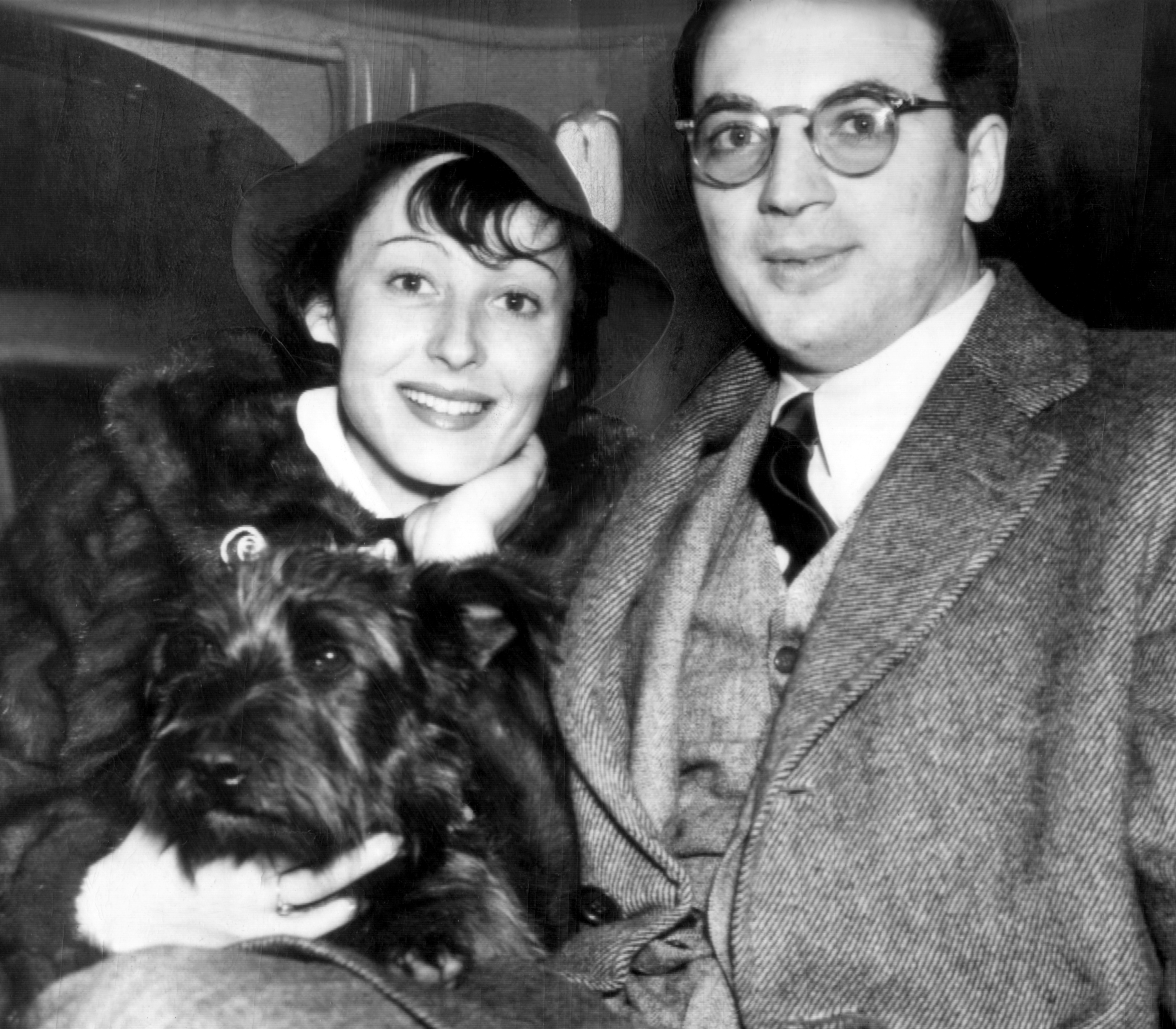
Luise Rainer made her final film appearance for MGM in 1938 and subsequently abandoned the film industry. In a 1983 interview, she recounted her decisive conversation with Louis B. Mayer, telling him, "Mr Mayer, I must stop making films. My source has dried up. I work from the inside out, and there is nothing inside to give." Following this confrontation, she traveled to Europe, where she actively contributed to efforts providing aid to children who were victims of the Spanish Civil War. Despite her departure, she was not immediately released from her contract and remained bound to make one more film for MGM until 1940.
Disenchanted with Hollywood, which she later described as a place where it was "impossible to have an intellectual conversation," Rainer relocated to New York City in 1940. She moved in with playwright Clifford Odets, whom she had married in 1937. Rainer made no secret of her unhappiness within the marriage, stating in a 1938 interview that "All the acting I've done on the stage or screen has been nothing compared to the acting I did in New York, when I tried to make everyone think I was happy-and my heart was breaking." She initially filed for divorce in mid-1938, but proceedings were delayed until Odets' return from England, with the divorce becoming final on May 14, 1940. During their marriage, Rainer and Odets spent summers at the Pine Brook Country Club in Nichols, Connecticut, a locale also frequented by many members of the Group Theatre (New York) in 1936 for both acting and writing pursuits.
Despite her established acting prowess, Rainer was considered for the iconic role of Scarlett O'Hara in Gone With the Wind (1939), but the idea was not well-received, and she was never given a screen test. She was also unsuccessful in persuading MGM executives to cast her in Johnny Belinda, a 1940 play focusing on a deaf-mute rape victim.
In a later interview, Rainer reflected on her sudden departure from the movie industry: "I was very young. There were a lot of things I was unprepared for. I was too honest, I talked serious instead of with my eyelashes and Hollywood thought I was cuckoo. I worked in seven big pictures in three years. I have to be inspired to give a good performance. I complained to a studio executive that the source was dried up. The executive told me, 'Why worry about the source. Let the director worry about that.' I didn't run away from anybody in Hollywood. I ran away from myself." This perspective highlights her artistic integrity and disillusionment with the commercial pressures of the studio system.
3. Later Life and Career
After leaving Hollywood, Luise Rainer pursued various endeavors, including a return to her stage roots and sporadic appearances in film and television, maintaining a connection to her artistic passion throughout her long life.
3.1. Stage and Sporadic Film/Television Appearances
While in Europe after her initial departure from Hollywood, Luise Rainer undertook medical studies. She found great satisfaction in being accepted as "just another student," rather than as a celebrated screen actress. However, she eventually returned to the stage, making her first post-Hollywood appearance as Françoise in Jacques Deval's play Behold the Bride at the Palace Theatre in Manchester on May 1, 1939. She reprised this role for her London debut at the Shaftesbury Theatre on May 23. Returning to America, she took on the lead role in George Bernard Shaw's Saint Joan on March 10, 1940, at the Belasco Theatre in Washington, D.C., under the direction of German émigré director Erwin Piscator. She made her first appearance on the New York stage at the Music Box Theatre in May 1942 as Miss Thing in J. M. Barrie's A Kiss for Cinderella.
Rainer made a comeback film appearance in Hostages in 1943, but then largely abandoned filmmaking in 1944 after marrying publisher Robert Knittel. She initially had no plans to return to the screen, but later explained her 1943 comeback: "All the professor and the other students cared about was whether I could answer the questions, not whether I could come to class looking glamorous. But after that brief return to the stage, I began to realize that all the doors which had been opened to me in Europe, and all the work I had been able to accomplish for refugee children, was due to the fact that people knew me from my screen work. I began to feel a sense of responsibility to a job which I had started and never finished. When I also felt, after that experience at Dennis, that perhaps I did have talent after all, and that my too-sudden stardom was not just a matter of happy accident, I decided to go back."
Upon her return to Hollywood, Rainer's contract at MGM had long expired, and she was without an agent. Paramount Pictures head David Rose offered her a starring role in an English film to be shot on location, but wartime conditions prevented her from accepting. Instead, Rose suggested in 1942 that she screen test for the lead role in For Whom the Bell Tolls (1943), but Ingrid Bergman was cast. Rainer eventually settled on a role in Hostages (1943), commenting to the press, "It's certainly not an Academy Award part, and thank goodness, my bosses don't expect me to win an award with it. ... No, this is something unspectacular but I hope, a step back in the right direction."
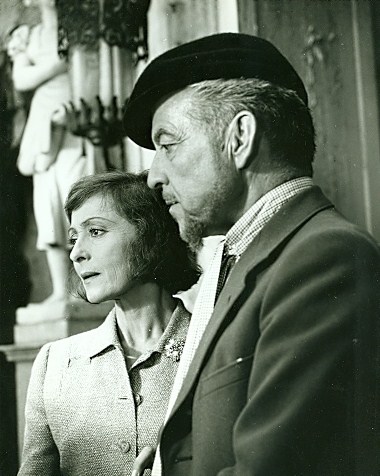
Rainer took her oath of allegiance to the United States in the 1940s, although she and her husband, Robert Knittel, primarily resided in the United Kingdom and Switzerland for the majority of their marriage. Robert Knittel passed away in 1989. The couple had one daughter, Francesca Knittel, now known as Francesca Knittel-Bowyer. Rainer also had two granddaughters, Luisa and Nicole, and two great-grandchildren, Luca and Hunter.
In 1960, Federico Fellini attempted to cast her in the cameo role of Dolores in his Oscar-winning classic La Dolce Vita, even persuading her to travel to the Rome location. However, Rainer quit the production before shooting began, reportedly due to her resistance to an unwanted sex scene or her insistence on overseeing her own dialogue. The role was subsequently cut from the final screenplay. Following her and her husband's move to Britain, she made sporadic television and stage appearances, including an episode of the World War II television series Combat! in 1965. In 1984, she took on a dual role in an episode of The Love Boat, for which she received a standing ovation from the crew. Her film comeback occurred at the age of 86 in 1997, with a small role in The Gambler. She also made appearances at the 1998 and 2003 Academy Awards ceremonies as part of special retrospective tributes to past Oscar winners.
3.2. Honors and Commemorative Activities
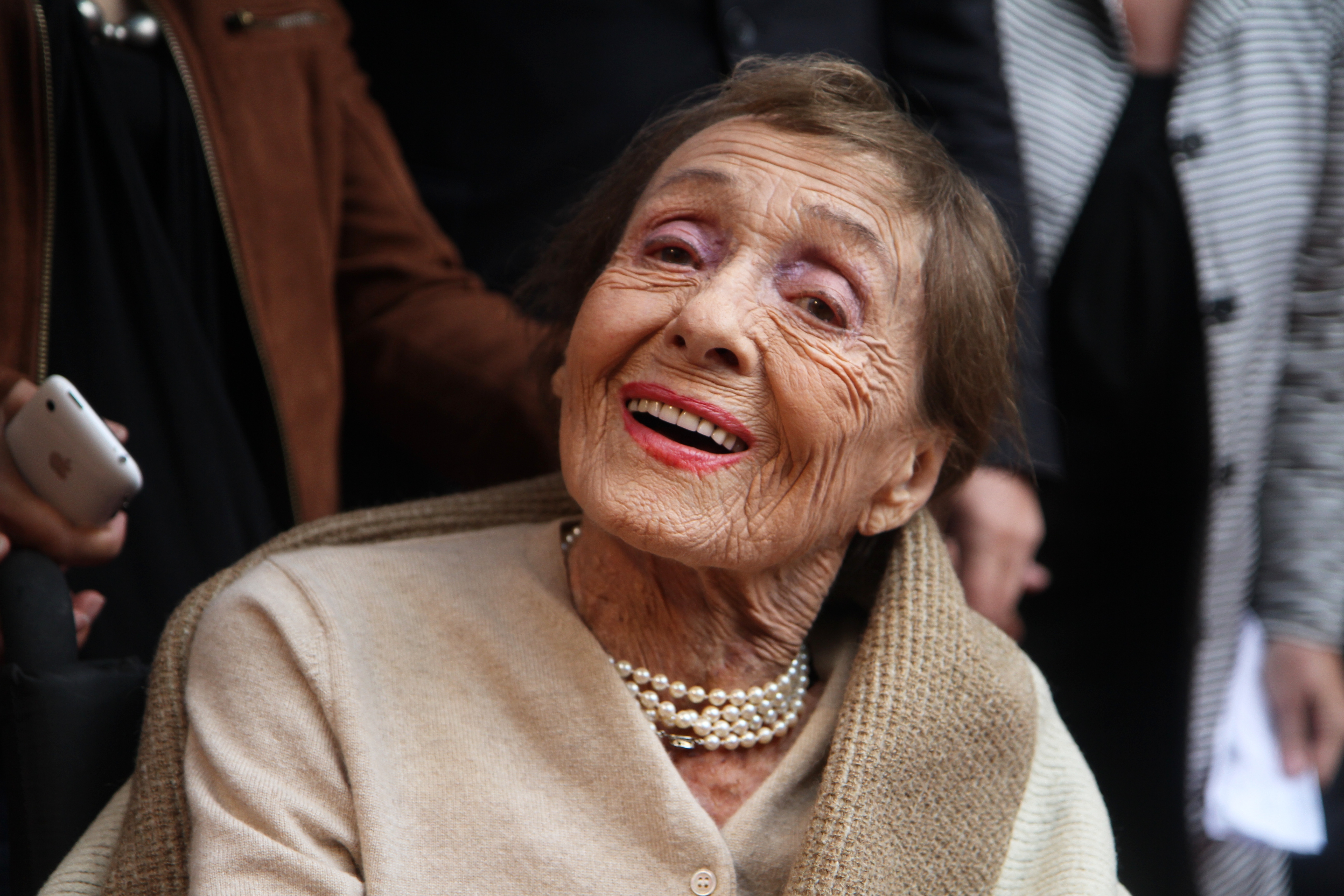
On January 12, 2010, Luise Rainer celebrated her centenary in London, with actor Sir Ian McKellen among her guests. That month, she was honored with a tribute at the British Film Institute's National Film Theatre, where she was interviewed by Richard Stirling before screenings of The Good Earth and The Great Waltz. She also appeared onstage at the National Theatre, interviewed by Sir Christopher Frayling. In April 2010, she returned to Hollywood to present a TCM festival screening of The Good Earth, accompanied by an interview with host Robert Osborne.
Luise Rainer has a star on the Hollywood Walk of Fame at 6300 Hollywood Boulevard. On September 5, 2011, at the age of 101, Rainer traveled to Berlin to receive a star on the Boulevard der Stars, Germany's equivalent of the Hollywood Walk of Fame. Her star was among 21 issued in 2011, following the 20 issued in 2010. The inclusion of her star was an exception and not without controversy, as she had been overlooked when the Boulevard der Stars initially opened in 2010, despite being Germany's only Academy Award-winning actress. In 2011, she was initially rejected by the jury, even after being nominated. A sustained campaign, initiated in October 2010 by music executive Paul Baylay, who noticed her omission, eventually led to her recognition. Baylay lobbied the press and politicians in Germany to support the campaign for the actress and her work to be acknowledged. The campaign also received support from the Central Council of Jews in Germany. In August 2011, the Boulevard der Stars finally relented, acknowledging that the Facebook, email, and letter campaign led by Baylay was instrumental in their decision to award an additional star to Rainer. She attended the installation ceremony in a wheelchair, alongside Berlin's then-Mayor Klaus Wowereit.
4. Personal Life
Luise Rainer was married twice during her lifetime. Her first marriage was to playwright Clifford Odets in 1937, a union that ended in divorce on May 14, 1940. She later married publisher Robert Knittel in 1944. This marriage lasted until Knittel's death in 1989. For most of their marriage, Rainer and Knittel resided in the United Kingdom and Switzerland.
She had one daughter, Francesca Knittel, who is now known as Francesca Knittel-Bowyer. Rainer was also a grandmother to two granddaughters, Luisa and Nicole, and a great-grandmother to two great-children, Luca and Hunter. In her later years, Rainer lived in London, in a flat that had previously been occupied by actress Vivien Leigh at 54 Eaton Square, Belgravia.
5. Death
Luise Rainer died at her London home on December 30, 2014, at the age of 104. Her cause of death was pneumonia. She passed away just 13 days before her 105th birthday. Following her death, Rainer's memorabilia were put up for auction in 2015. The auction successfully netted 489.07 K USD for her heirs.
6. Assessment and Legacy
Luise Rainer's career is often assessed in terms of her unique early success and the subsequent challenges she faced in Hollywood, leading to a complex legacy.
6.1. Acting Style
While Luise Rainer is primarily known for her historic back-to-back Academy Award wins, her acting style itself garnered mixed critical reception. Some critics described her as "an excessive actress, larger than life," suggesting that her dramatic approach was perhaps "more suited to the Viennese and German stage of her youth than anywhere else." This perspective implies that her theatrical training and intensity might not have fully translated or been appreciated within the more restrained conventions of early Hollywood cinema. Despite this, her ability to embody vastly different characters, from the vivacious Anna Held to the subdued O-Lan, showcased her versatility.
6.2. "The Oscar Curse"
Luise Rainer's rapid career decline after winning two consecutive Academy Awards is a notable phenomenon in Hollywood history, often referred to as "The Oscar Curse." This term, reportedly coined by columnist Louella Parsons, describes the unfortunate pattern of an actor's career faltering despite, or perhaps because of, a major Oscar win.
Several factors are cited as contributing to Rainer's "curse." One significant reason was the immense pressure and the impossibly high expectations placed upon her after achieving such early and unprecedented success. Rainer herself felt that the two Oscars were the "worst possible thing" to befall her career, forcing her to "work all the harder now to prove the Academy was right." The nature of her second Oscar-winning role as O-Lan, a humble peasant, also contrasted sharply with the studio's desire to maintain her glamorous image, leading to creative clashes.
Additionally, some film historians suggest that the poor career advice she received from her then-husband, playwright Clifford Odets, contributed to her rapid decline. The unexpected and untimely death of her beloved producer, Irving Thalberg, at age 37, was another significant blow, as he was a strong advocate for her artistic integrity within the studio system. Some film historians regard Luise Rainer as the "most extreme case of an Oscar victim in Hollywood mythology." The exact reasons for her quick disappearance remain a subject of discussion, with some speculation that the Academy members might have awarded her to spite other actresses they disliked, or simply due to her own decision to withdraw from the industry. However, Rainer's own statements suggest her departure was a conscious choice driven by artistic dissatisfaction and a refusal to conform to the studio's commercial demands.
7. Filmography
7.1. Film
| Year | Title | Role |
|---|---|---|
| 1932 | Sehnsucht 202 | Kitty |
| 1932 | Madame hat Besuch | |
| 1933 | Today Is the Day | Marita Costa |
| 1935 | Escapade | Leopoldine Dur |
| 1936 | The Great Ziegfeld | Anna Held |
| 1937 | The Good Earth | O-Lan |
| 1937 | The Emperor's Candlesticks | Countess Olga Mironova |
| 1937 | Big City | Anna Benton |
| 1938 | The Toy Wife | Gilberte 'Frou Frou' Brigard |
| 1938 | The Great Waltz | Poldi Vogelhuber |
| 1938 | Dramatic School | Louise Mauban |
| 1943 | Hostages | Milada Pressinger |
| 1997 | The Gambler | Grandmother |
| 2003 | Poem - Ich setzte den Fuß in die Luft und sie trug | Herself |
7.2. Television
| Year | Title | Role | Notes |
|---|---|---|---|
| 1949 | The Chevrolet Tele-Theatre | Episode: "Trapeze" | |
| 1950-1953 | Lux Video Theatre | Caroline / Mrs. Page | 2 episodes |
| 1950-1957 | BBC Sunday Night Theatre | Ingra Arlberg / Nina | 2 episodes |
| 1951 | Schlitz Playhouse of Stars | Chambermaid | Episode: "Love Came Late" |
| 1951 | Faith Baldwin Romance Theatre | Episode: "Women Overboard" | |
| 1954 | Suspense | Episode: "Torment" | |
| 1963 | Die kleinen Füchse | Birdie Hubbard | TV movie |
| 1965 | Combat! | Countess De Roy | Episode: "Finest Hour" |
| 1984 | The Love Boat | Twin sisters Dorothy Fielding / Maggie Koerner | 1 episode |
| 1991 | A Dancer | Anna | TV movie |
8. Awards and Nominations
| Year | Award | Category | Nominated Work | Result |
|---|---|---|---|---|
| 1936 | New York Film Critics Circle Award | Best Actress | The Great Ziegfeld | Won |
| 1937 | Academy Award | Best Actress | The Great Ziegfeld | Won |
| 1938 | Academy Award | Best Actress | The Good Earth | Won |